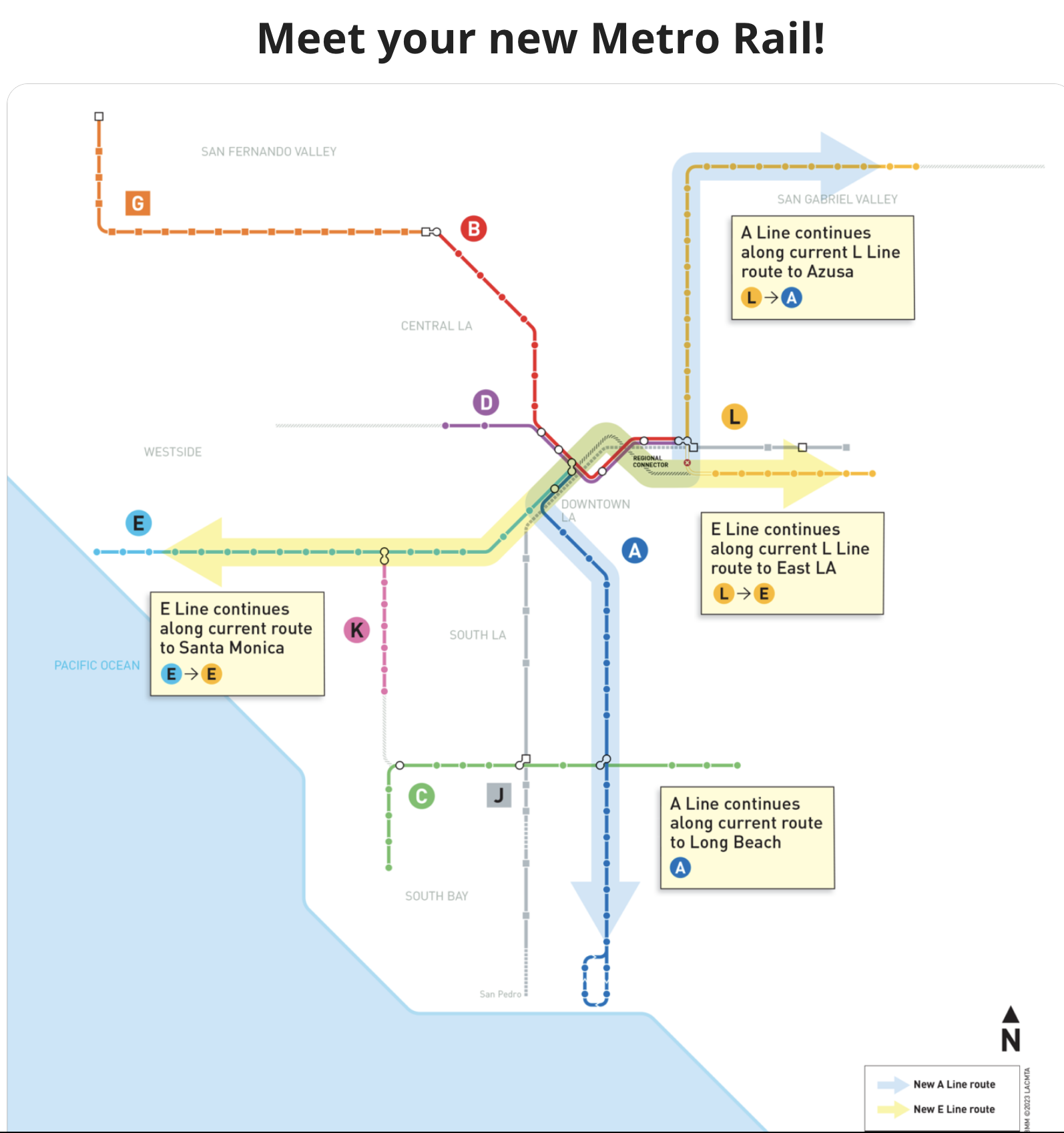Los Angeles’s Regional Connector is open. It’s a small piece of subway — less than two miles, with three stations, but it utterly transforms the rail network of Los Angeles, making trips across downtown much faster. Here’s LA Metro’s quick diagram of the change:
It’s simple: In the network as it existed until this weeekend, light rail from north and east, called Line L, only came to the northeast edge of downtown, while the two lines from the south and west (Lines A and E) only came to the southwest edge. Traveling across the center thus required making two transfers, using the Line C & D Subway. The Regional Connector rearranges these lines to that all services flow across downtown and out the far side. Much faster trips across downtown mean greater access to opportunity for many people across the city and beyond.
I’ve written before about the difficulty of getting regional focus on these core-city projects. LA Metro did a good job with this one, starting by branding it the Regional Connector. It may be in downtown Los Angeles but it’s not for downtown Los Angeles. It’s for the entire region.

Assuming I am reading the map correctly, have they considered renaming the L line branches to A and E, reflecting how the new network operates? Would that be clearer for new users?
…or is that what they are doing? (Yes, perhaps I did misinterpret it)
South side of L is replaced by E. North side of L is replaced by A.
Is this a similar issue to what Boston faces, both in connecting the red/ green lines and more importantly in connecting regional commuter rail service that end in North or South Stations?
Slight correction: the two lines that were previously used for transferring were the B Line and the D Line. The names were a bit less confusing when they were using colors instead of letters.
Sean Gillis – this solution is similar to the solution Boston would need to solve the challenge MBTA faces in connecting up the commuter rail lines that currently stub-end at South Station and North Station. The Red and Green lines have other challenges, but connectivity across the center is not the main issue for those lines. For the commuter rail lines, MBTA is facing limited capacity at the central city stub-end terminals (South and North Stations), and the lack of a connected service across the center is depressing the ridership potential.